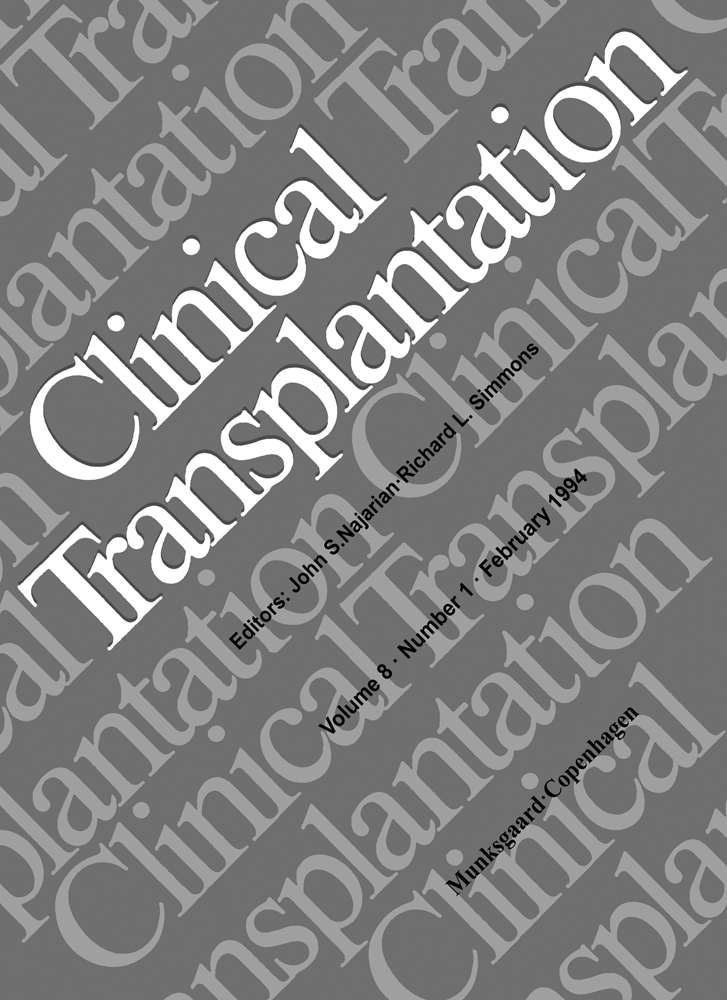Treatment of the Budd-Chiari syndrome with orthotopic liver transplantation and long-term anticoagulation
Abstract
The Budd-Chiari syndrome (BCS) with hepatic vein occlusion is a rare disorder that can effectively be treated with orthotopic liver transplantation. In this retrospective analysis we report on 7 patients who received 9 liver grafts for terminal BCS. One patient died after 4 months due to cytomegalovirus-pneumonia. The actuarial survival rate is 85.7% compared to more than 90% in all other 376 patients transplanted between September 1988 and April 1993 at our institution. Anticoagulation management consisted of early postoperative intravenous heparin and continuation with dicoumarin. One patient with thrombocytosis received hydroxyurea. Under this regimen one postoperative hemorrhage requiring laparotomy was observed. Discontinuation of oral anticoagulation due to gastrointestinal bleeding caused hepatic artery and portal vein thrombosis in 1 patient who had to be relransplanted. One recurrence requiring retransplantalion as well was due to an insufficient dicoumarin intake. In conclusion, terminal BCS represents a good indication for orthotopic liver transplantation with a closely-monitored anticoagulation to avoid such adverse side effects as thrombosis and hemorrhage.




